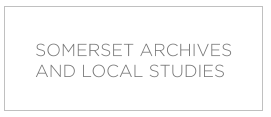

Civil registration
The systematic registration of births, marriages and deaths in England and Wales started on 1 July 1837, although birth registration only became compulsory in 1875. Registration Services hold the registers of births, marriages and deaths that have taken place in their districts since 1837. A national index is held at the General Register Office.
How to get copies of birth, marriage or death certificates
You can order Somerset certificates: online from the Somerset Council website, searching for “request certificate”; by telephone 0300 123 2224; or writing in to Certificate Services, Somerset Heritage Centre, Brunel Way, Norton Fitzwarren, TA2 6SF. Charges apply, and depend on the service you choose.
Alternatively, you can order certificates from the General Register Office (GRO). Charges apply for this service. Certificates can be ordered by post, or online by searching for the General Register Office.
It is helpful to know the volume and page number of the entry in which you are interested if possible. To find this, use the General Register Office indexes, see below for details.
General Register Office Indexes
Civil indexes of births, marriages and deaths have been put together quarterly in March, June, September and December. Originally, registration sub-districts followed the boundaries of the Poor Law Unions, so the place-names given in the civil indexes are not the names of parishes but of groups of up to 30 parishes. The index used to be known as the St Catherine’s House Index.
Indexes that used to be held at the Family Records Centre can now be seen at The National Archives, but you cannot get certificates from them. Certificates can only be obtained from the General Register Office or local Registration Services.
Microfilm copies of the General Register Office Indexes are available at the Somerset Heritage Centre (1837 to 2004), at Weston super Mare Library (1837 to 1998) and Barnstaple Local Studies Library (1837-1983). The indexes are also available online at Ancestry, Find My Past or FreeBMD.
Information on the certificates
Birth certificates list:
- Date of birth
- Place of birth (name of parish; sometimes the street if in a town)
- Name of child
- Sex of child
- Father’s name (often left blank for illegitimate children)
- Mother’s name, plus maiden name is applicable
- Father’s occupation (again, often blank for illegitimate children)
- Name, signature and residence of the informant (usually the mother)
Marriage certificates list:
- Date of marriage
- Name of church, chapel or register office where it took place
- Names of both parties
- Ages of both parties (before 1870 often just say “of full age”, usually taken to mean 21 or over)
- ‘Condition’ of both parties (e.g. bachelor, widow)
- ‘Rank or profession’ of both parties (i.e. social status or job)
- Places of residence at time of marriage
- Full names and ‘ranks or professions’ of both fathers
- Witnesses to the marriage
- This is exactly the same information you will find in parish marriage registers
- From 4 May 2021 the registering of marriages moved to a digital system, and marriage registers were not longer used. From this date marriage certificates include the mothers of the bride and groom.
Death certificates list:
- Date of death
- Place of death
- Name of deceased
- Sex of deceased
- Occupation of deceased
- Age at death (after 1866)
- Cause of death
- Signature, description and residence of the informant
Common problems
If you cannot find an entry, these suggestions may help you:
- The event was never registered - This is especially common for births before 1875. You may be able to trace this event using a different source, such as parish registers
- The event was registered but was left out of the General Register Office indexes or indexed wrongly - Check different spellings of the surname or think if it could be misheard, which would mean that it could have been written down in a different way. You may still be able to find the entry if you know the area the event happened in
- The event happened outside the United Kingdom - You can see separate indexes of events registered by British Consuls or relating to Servicemen (including many army births in the United Kingdom), at The National Archives. You can see indexes to some of these registers at the Somerset Heritage Centre
- The event happened in Scotland - You can see Scottish records online by searching for Scotlands People, or visiting Scotland’s People Centre at General Register House, Edinburgh
- Still births are not included in the birth or death indexes, but certificates are available from the General Register Office
- The registration district boundary changed - This happened at various times and may mean that a parish ‘moves’ from one district to another
